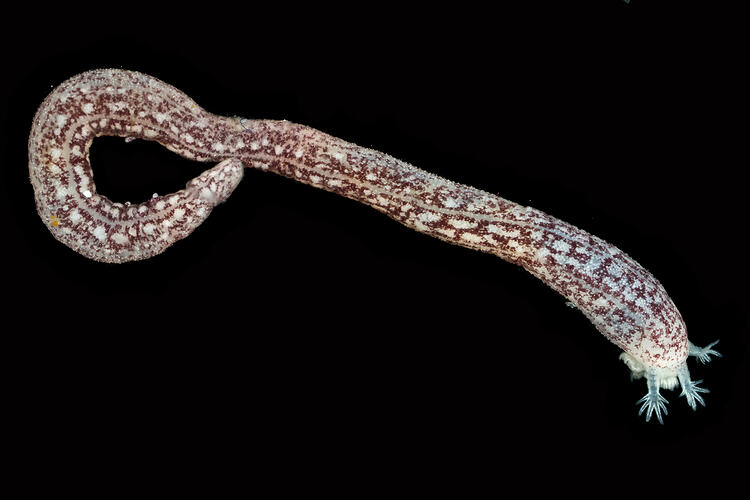General Description
Small, soft, worm-like; white body with dark (purple or black) flecks or broken bands, white tentacles; 10 digitate tentacles, predominantly with 6 (3 pairs of) digits, longer distally; no tube feet; body wall ossicles 6-spoked wheels (not clumped) with non-continuous teeth, S-shaped hooks with minute spinelets; up to 2cms long.
Biology
The thin, often transparent body wall is thought to facilitate gas exchange as these sea cucumbers don't have the complex respiratory trees found in other groups. Rowedota epiphyka is a benthic deposit feeder and detritivore, using its hand-like tentacles to feed on dead organic matter which has settled on the seafloor.
Distribution
Southern Australia, including western and central Victoria. From Cape Paterson (eastern Victoria) to Cape Naturaliste (south-western Australia), and northern Tasmania.
Habitat
Shallow sub-littoral, on reefs or in rocky shallows, on seaweed/algae (e.g. Amphibolis) to depth of at least 2 m.
More Information
-
Animal Type
-
Animal SubType
-
Fast Fact
Named for the Greek epi (upon) and phykos (seaweed, alga), referring to their habitat as they are often seen on algae where they look like "gelatinous blobs".
-
Brief Id
Worm-like body, white with dark purple flecks, 10 digitate tentacles, no tube feet.
-
Maximum Size
2 cm
-
Habitats
-
Diet
Organic matter
-
Endemicity
-
Depths
Shallow (1-30 m)
-
Water Column Locations
On or near seafloor
-
Taxon Name
-
Scientific Author
(O'Loughlin, 2007)
-
Common Name
Sea Cucumber
-
Kingdom
-
Phylum
-
Class
-
Order
-
Family
-
Genus
-
Species Name
epiphyka

